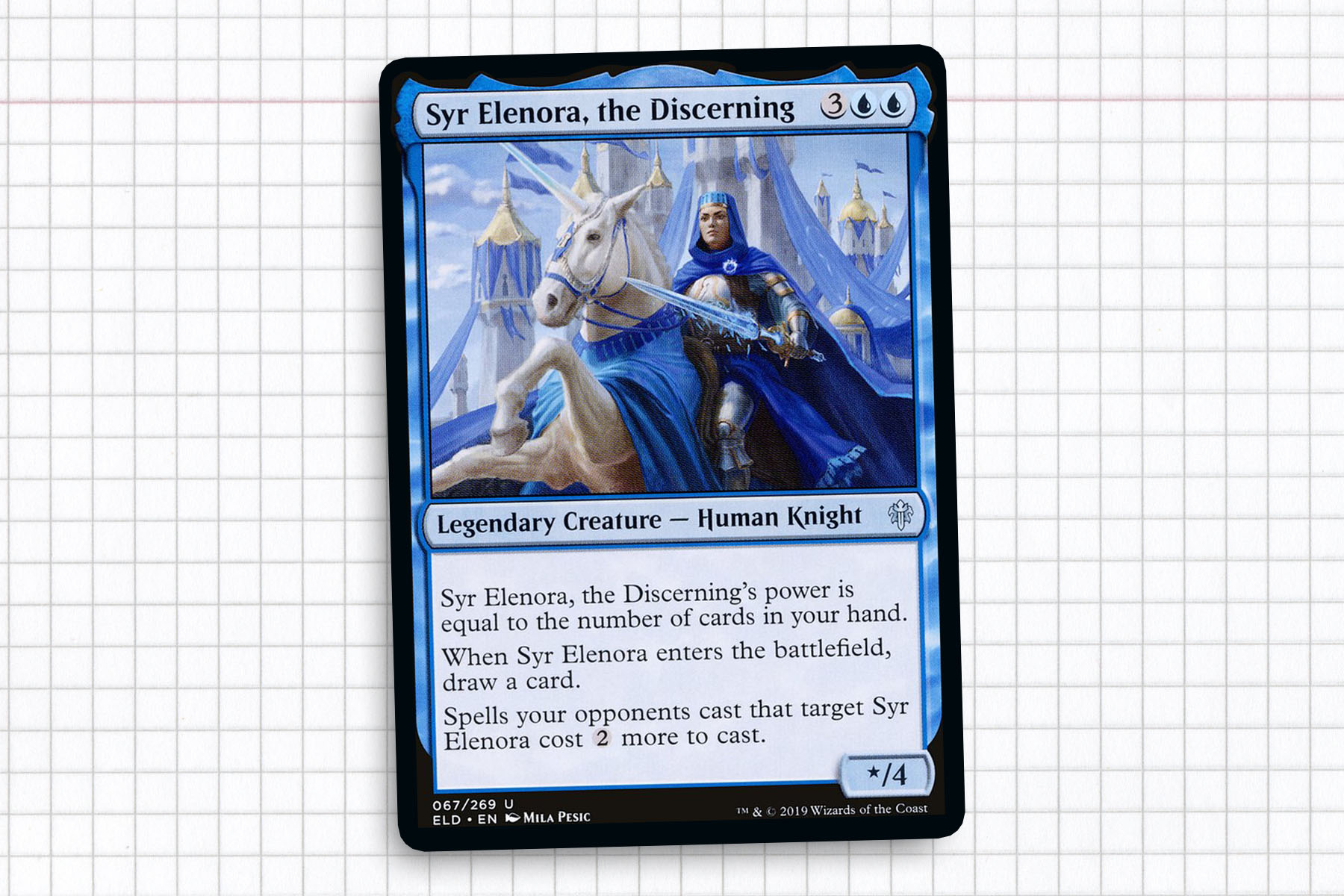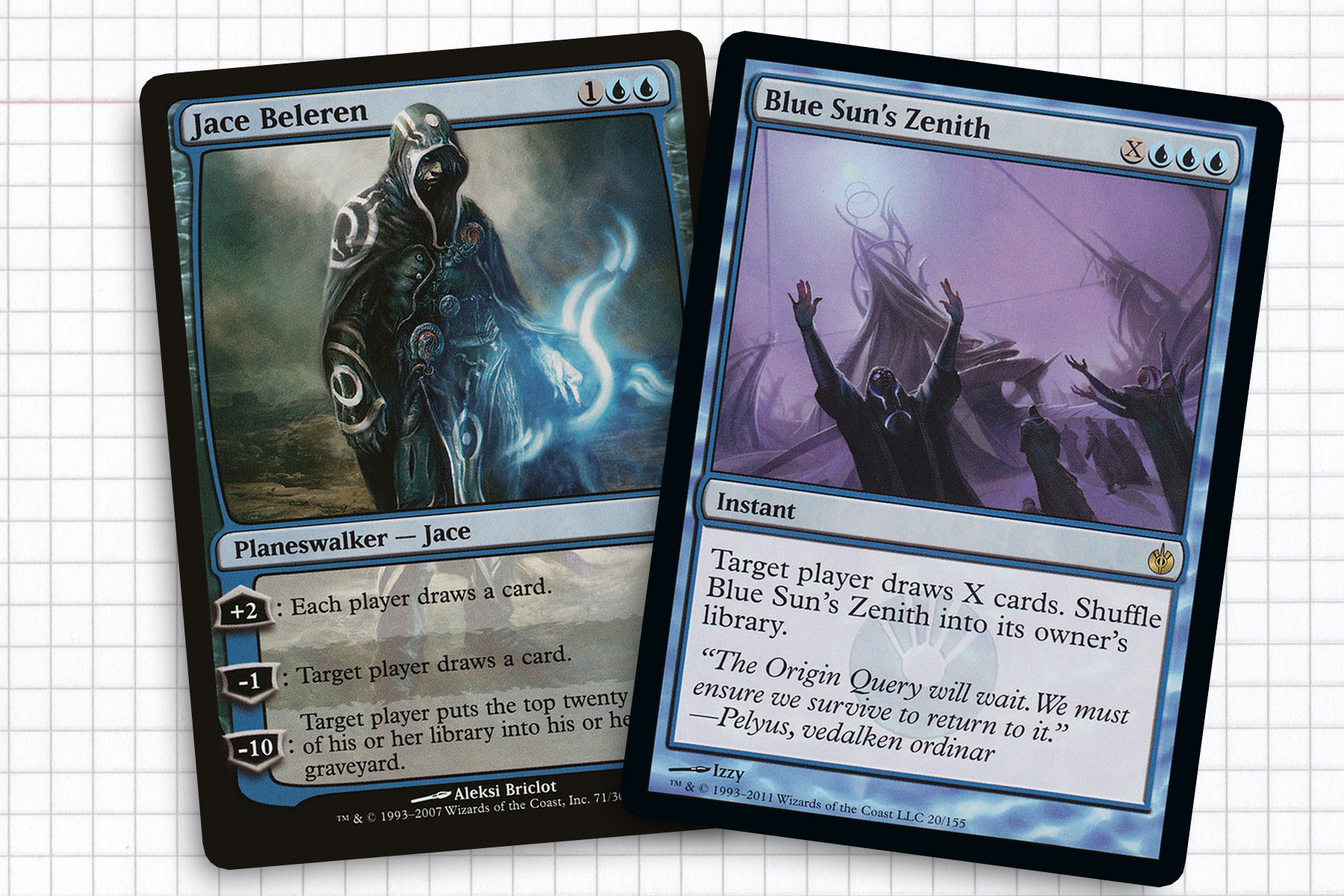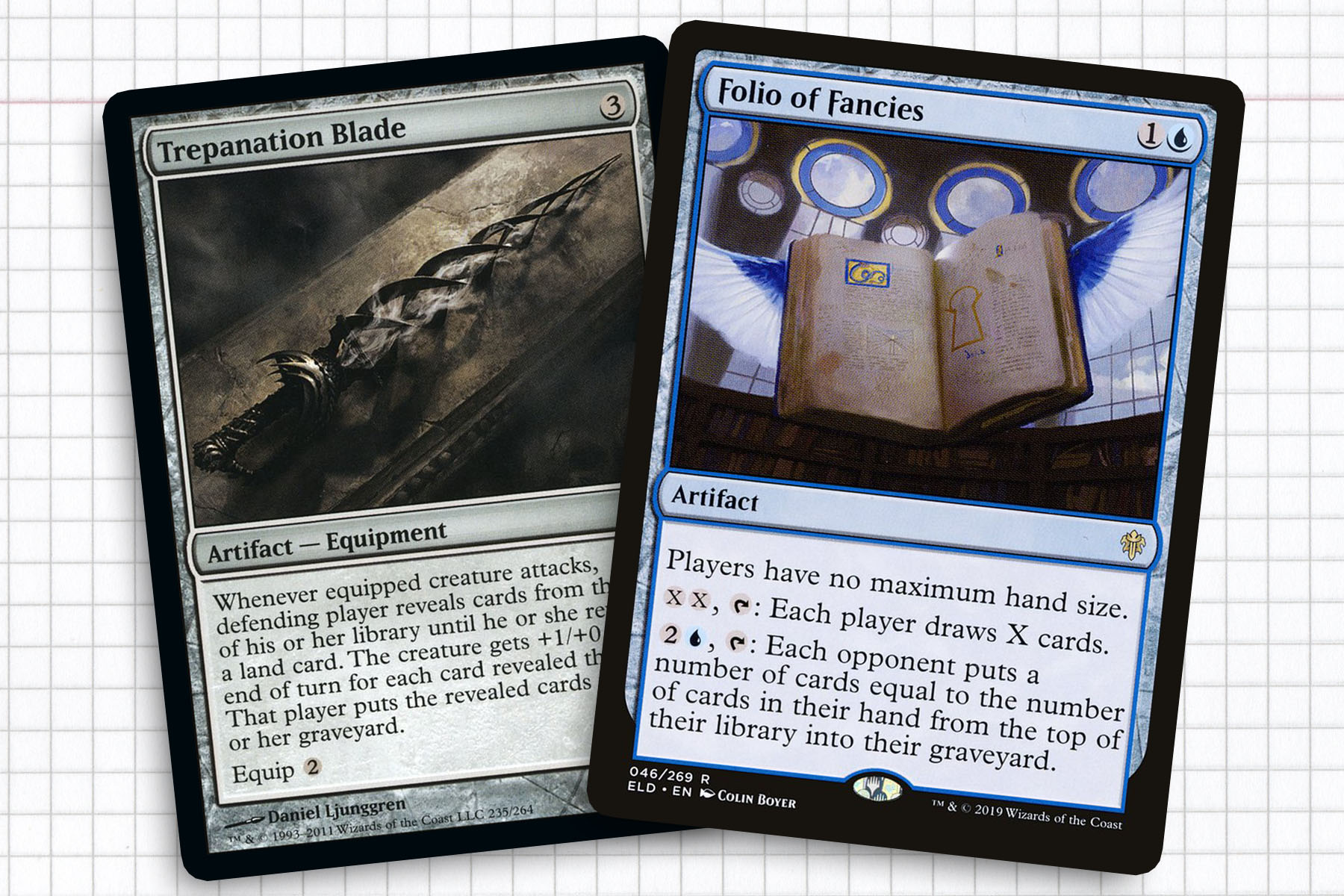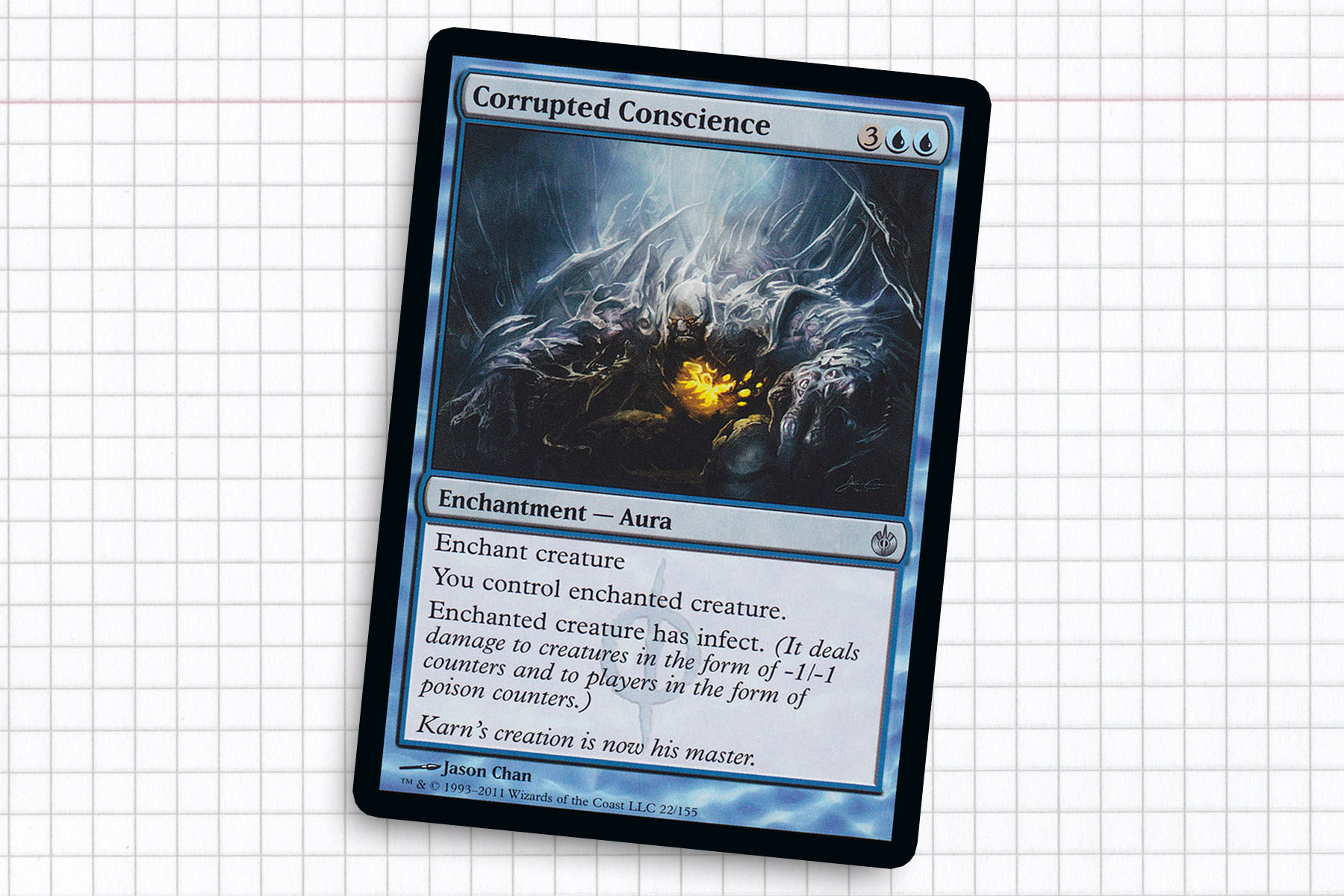Another year of Magic is rapidly drawing to a close. It was easily the busiest in my time with Hipsters of the Coast. Writing for close to three years has been a rewarding experience; it’s forced me to hit admittedly self-imposed deadlines during busy weeks and to explore areas of Commander I wouldn’t have looked into without the need for inspiration. Before I started writing weekly, I rarely gave a lot of thought to mono-colored decks as my collection started to include a wealth of shocklands. But as my friend Alex Szeto will likely attest, there is much to gain from focusing on the purity of a mono-colored deck.
While there are a handful of interesting multicolored generals to choose from in Throne of Eldraine, Wizards chose to feature a lot a single colored legends in this set. I think my aversion kept me away for far too long into the set’s life, and I wanted to correct that before we moved into the new year. It should have been no surprise that in a storybook world like Eldraine, knights would be a sizeable theme. Within Throne of Eldraine we’re given a full cycle of mono-colored legendary knights. From this group, Syr Elenora, the Discerning has stuck with me for the last two months.
Our general presents an interesting puzzle. At first I had assumed that a build of her was already relatively solved, before realizing that her gameplay didn’t match my biased perspective. We have a fairly basic general who comes with some degree of built-in protection and can play aggressively in a classically control-focused color. Long time readers will see a method I used for this deck’s philosophy, one that I don’t believe I’ve touched on recently but has worked marvelously in the past. We have a pretty strong Voltron general this week, with a killer ace-in-the-hole.

Syr Elenora, the Discerning
My initial bias against Syr Elenora’s hand-size mechanic requires a bit of a Magic history lesson. The first time I read Elenora, my mind went to the cycle of legendary creatures coming out of Saviors of Kamigawa like Soramaro, First to Dream and Kagemaro, First to Suffer—cards to which time has not been kind. They tap into a major problem with the design of Saviors of Kamigama more generally: the set’s mechanics encouraged players to hoard cards in hand instead of playing Magic by casting spells.
This is of course not a correct analysis of Elenora. We are looking to have a reasonably-sized hand, but our general does not switch on only at a particular hand size. In practice, Elenora is going to play a lot more like a legendary Overbeing of Myth than the Kamigawa spirits.
For this deck we will want to be drawing cards to replace any we might be using, but we’ll also be filling our deck with cards that will be amplifying Elenora’s power by also paying attention to hand size. This deck is going to be about as voltron as Blue can get. Frankly, I can get behind any deck looking to further progress a game.

Drawing Live
The draw package of a deck are never really my strong suit; they tend to look the same—especially in mono-color—and often exist in a deck merely to ensure you don’t fall too far behind the rest of the table. But card draw is the low-hanging fruit when constructing this deck. As such, we’re looking to draw cards for the express purpose of keeping our hand consistently filled up, all while packing control spells.
The list of desired cards here is cut and dried: pull out your copies of Blue Sun’s Zenith, Pull from Tomorrow, Mulldrifter, and Arcanis the Omnipotent from the nearest binder and you’re likely going to have a good time. Add in newer cards like Gadwick, the Wizened and the often overlooked Nezahal, Primal Tide and suddenly the draw package begins to look super consistent and rewarding.
While I’m not a convert to planeswalkers having an established place in Commander, notorious group hug walker Jace Beleren and the newcomer Kasmina, Enigmatic Mentor can both create small but consistent forms of card advantage keep us moving through our deck. If the deck performs the way I’ve envisioned, they will likely be the last thing people are concerned with on our battlefield.

Raising Your Hand
In many ways this deck is indistinguishable from any other blue deck. You’re going to want to sit back, keep your hand full by drawing cards and attacking when the moment is right. As I was coming up with the skeleton for the deck, I asked myself this: “If Invisible Stalker was my general, how could I best leverage its strengths?”
This mindset going into deck construction has worked well for me in the past as I built around Cao Ren, Wei Commander and later Horde of Notions. The overlap with that hypothetical deck and this one was that I immediately wanted cards like Trepanation Blade and Strata Scythe lurking within my deck. But in keeping with the theme of our deck, we can also play with a casual favorite of mine, Empyrial Plate—sadly, a one-of-a-kind equipment.
Just because we might not be able to easily quadruple our general’s power, that doesn’t stop us from going far beyond our hand-size limits. With cards like Folio of Fancies, Reliquary Tower, or Spellbook we can have an unlimited hand size; beneficial not only to our general, but to our own ability to protect ourselves with as many options as we can keep available.
We of course cannot overlook a staple of this brand of deck, Psychosis Crawler. This card not only plays well with what the deck has always been looking to do, but it combos nicely with our ace-in-the-hole, Enter the Infinite. Even without the Crawler, Enter the Infinite is going to push our game into our fundamental turn—though admittedly at a high risk if we stumble after casting it.

A Win, No Matter the Cost
For as messy as the game plan might be on the surface, I think there is something powerful here. I chose to highlight Enter the Infinite as an extreme draw spell for this deck, similar to how I’ve recently learned that Traumatize can create an all but certain win for Bruna, Light of Alabaster. Truthfully, any spell that can easily make Elenora into a one-hit knockout is going to work here. This can be done through the aforementioned Blue Sun’s Zenith or self-targeting Corrupted Conscience.
I like these kinds of decks because they normally settle around 85 cards during my first hard pass on the deck skeleton, meaning that there is ample room for innovation and customization. The open-ended nature of our general, crossed with the amount of card draw we have being on par with tutoring since we have a wide array of synergistic options, means that we should be able to get away with looser plans of action and still deliver results. That may not be everyone’s favorite place to have a deck sit at, but it’s “on brand” enough for me.
Closing Thoughts
Every time I look through Throne of Eldraine cards, I’m inspired by the designs; which makes the lateness of this deck’s construction in the life cycle of Eldraine all the more puzzling. But I think I finally figured out why. This past weekend, I played in a Secret Santa event with my local playgroup where we built and then gifted away Commander decks.
This was the first time I had seen a Throne of Eldraine in play and the deck I had built—the Kurkesh deck I wrote about two weeks ago—was the first time I had built with any of the cards. To be honest, I wasn’t sure why I haven’t opened any packs of the set up to this point until I was talking to Alex from the Goblin Lore Podcast, who had a similar story. We both agreed that Throne of Eldraine wasn’t the problem; but that by the time the set was released, we’d been uttered worn down by the constant waves of product over the last year.
Next year is poised to be a big year for Magic and possibly the biggest year for Commander alone since the format’s inception. While I think Commander is the best format, I would be lying if I didn’t say that I’m a little worried that next year may be an extreme stress test as the amount of product aimed specifically at it grows larger and larger. My hope is that this amplification of product will pair nicely with the eruption of Commander Fests in their first full year. I should have one more article in me before the end of the year, so you haven’t gotten rid of me yet. I hope to see you then.
Ryan Sainio is a Graphic Designer who writes about EDH and the EDH community. He has been playing Magic: The Gathering since 7th Edition in 2002 and values flavorful and fun gameplay over competitively optimized decks.

